Mr. Saville, why did you want to be a graphic designer?
I spent my time in school painting stuff and my art teacher said, “You could do graphic design.” Basically it looked like I could get a professional job doing what I liked doing in my spare time. I didn’t understand what it really meant. I grew up in Northern England and the cultural horizons were very, very limited. The only interesting, avant-garde visual information I was receiving in the mid ’70s was on a record sleeve. So, you know, you’re 20 years of age and you say, “I want to do that!”
That’s interesting because when we interviewed Raf Simons he said that the album covers you did for Factory Records similarly opened him up to the broader cultural world and helped him find the path he ultimately took as a fashion designer.
It ends up being an early inspiration for many. Whether it’s Raf Simons or Jonathan Ive or Wolfgang Tillmans or endless others. It still staggers me. Before they’ve decided that they want to be a ballet dancer or an architect or an accountant or a research scientist, the first shared common experience outside of the home is through this medium of music. And in my late teens my horizons began to expand all through pop. Not through a school curriculum, not through my family background, just pop culture.
What kinds of things did you learn through pop culture?
Roxy Music introduced me to the idea that somewhere out there was something called a demimonde, what history books referred to as a café society. I remember thinking, “I would quite like to find that place.” I began to listen to classical music because of Kraftwerk. Then, whilst I’m at art school punk happened and in ’76 there was a kind of coup d’état in youth culture.
A coup d’état?
The incumbent establishment of rock ‘n’ roll had lost the ear of its electorate and it wasn’t really speaking to you anymore. 23-truck convoys and huge inflatable pigs over Battersea Power Station weren’t actually anything to do with your reality, with your life. After Roxy there was a group called Dr. Feelgood and you felt something else coming, a kind of new authenticity. And suddenly in ’76 there’s this coup d’état and a bunch of kids come out of London and changed the order of youth culture. And then some groups in Manchester began. Suddenly, you’re actually close to it. Suddenly…
…you’re a part of it.
Because you’re just in the right place at the right time and you’re the right age and… weren’t you at the bar with that guy last night? Suddenly you actually became a part of it. One evening in a little basement club in Manchester with about 30 other people, I remember thinking, “Wow, this must have been what rock ‘n’ roll was like.”
In retrospect that was probably pretty accurate.
Yeah, that thought actually went through my mind one night. Formerly I had sat with 2,000 other kids in an auditorium and was just a passive recipient and suddenly by ’76 you were in the very midst of it. We were suddenly there on the ground and as art students we felt this responsibility, post-punk, to propose a new visual language for youth culture. There were 18 months of punk, the gates were pulled down, the palace was burned, cut up blackmail style, anarchic Jamie Reid, Sex Pistols, okay, fine. You’ve done that. Now what are you going to say?
What did you propose?
It seemed as if we were in a revolution in our microcosm of youth culture and we had to propose a new way forward, so I began to make the analogy with early modernism – Malevich’s Black Square, Constructivism, Modernism in Germany, De Stijl in Holland, Marinetti and the Futurists in Italy. So when I met with Tony Wilson, with whom I would later start Factory Records, and said, “Can I do something?” and he said, “Yes, we’re having a night called The Factory, do a poster,” I knew exactly what I wanted. I knew I wanted to quote Tschichold, one of the pioneers of modern typography, a Swiss designer.
That’s how you got involved with Tony Wilson and Factory Records?
Yes and from then on the visual side of Factory ended up being my responsibility. For instance, Joy Division gave me some elements when they were ready to do Unknown Pleasures and I was just allowed to do it the way I wanted to do it. And when there was a second album they came to me: “What have you got?” And that’s where the Closer cover came from.
What happened when Ian Curtis died and left behind what became New Order?
Stephen, Bernard, and Peter Hook became a kind of triumvirate. After Ian died, nobody took control of New Order until the ’90s. All songs were written and performed by New Order; they were nobody’s group. And by virtue of being nobody’s group, there was no reciprocal ego for me to address in the imagery of the group – it wasn’t for anyone and they didn’t really want to discuss it in person. It was a completely unique situation in the context of communications design.
Why was it unique?
Because it defaulted to me. In the real world of communications design, or graphic design, the work is about other people, not about you. In almost any form of commissioned work, the commissioner isn’t really that concerned about what this is about for you. They’re commissioning it, so they want to know why it matters to them. But the covers were about what I wanted to do, which was in some kind of weird, subconscious way about me and where I was going. New Order didn’t approve it, they rarely saw it. More often than not they would go directly from me; “Blue Monday” for example went directly from me to the printer.
Sometimes the band didn’t even see the cover before it went to the printer?
No, it was always, “Where is it? It’s late, it should have been done weeks ago, just get it to the fucking printer.” More often than not, New Order would get to see the covers when they were in the stores. And sometimes they liked them and sometimes they didn’t. So there’s this decade during which my sensibility, my own pathway of enquiry, goes out on a New Order cover a couple of times a year.
Where did you take inspiration from if you could do whatever you wanted?
I would just have to find something in me that I needed to do. They’re very fashion linked. They’re linked to a zeitgeist that I was picking up from many places. And because of the success of New Order, they go from this relatively small audience that grows and grows and grows and “Blue Monday” goes to a million or two million people. So I had exceptional circumstances at the beginning, but after such freedom I knew that general design was not what I wanted to do. I didn’t want to do other people’s work for them because more often than not the purpose or the meaning of that work was unlikely to support your own ideals.
Do you still do commissioned graphic design work?
Alice, my assistant, doesn’t like me using the word “retired” because it’s not accurate, but 10 years ago I formally stepped away from pursuing commissioned work. I cannot even operate any of the design programs. Graphic design “deliverables” do not come out this studio, or out of me and I’ve been able, finally, to try and follow my own path by not having a business to run. In 2003 I accepted that my future would be on the art side of the divide rather than the design side, but I soon realized that I didn’t really know anything about art.
Really? Some people would call your album covers art.
As a designer, you think you know about art, but that rigorous process of who you are and “why do you want to do this?” is not incumbent upon you as a designer. You know about art by looking in through the window, but you don’t really know anything about art at all. I realized that if the work was going to stand alone in its own right, I had to understand myself. I did work which I never had to answer to anyone about – but I also never had to answer to myself about it.
Have you started to come to terms with those questions since giving up doing design work?
I’m very pleased that I’ve begun to get somewhere. What I did at Factory and what is at the heart of what I am doing now is sharing where I’m at with other people, in a very inclusive way. I seem to be wired towards sharing my state with others. I quite like giving the work to people. I sort of want them to have it. Gradually, I’m beginning to understand that the work that I’ve done is about me – but in a way that it becomes about you.
Return to Top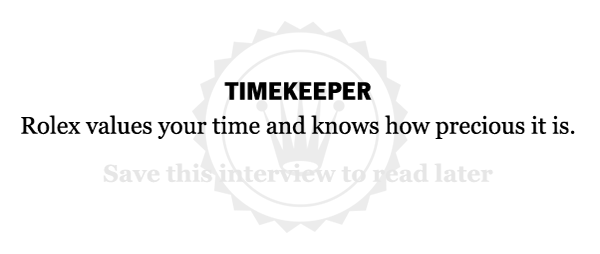
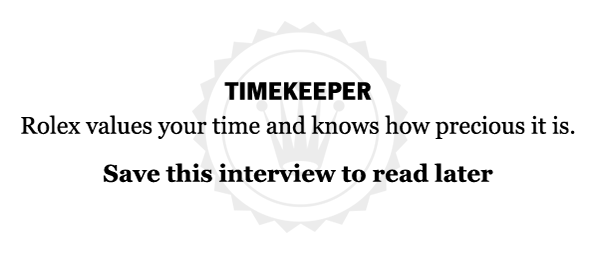
Short Profile
Name: Peter Saville
DOB: 9 October 1955
Place of Birth: Manchester, England, UK
Occupation: Graphic Designer
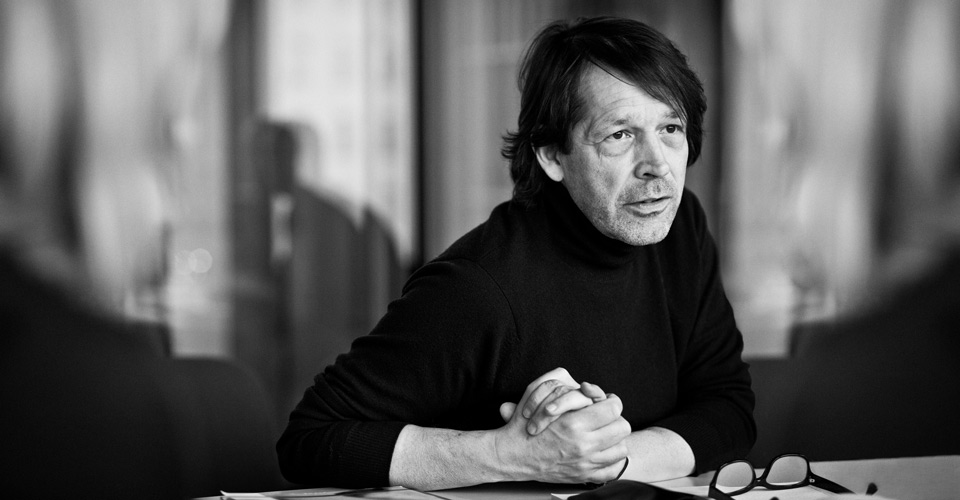

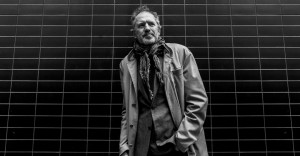
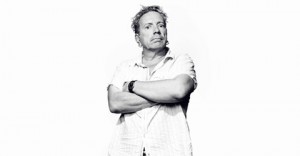

















Some really interesting and natural answers in this. One of my favourites of the site!
Authentic indeed.